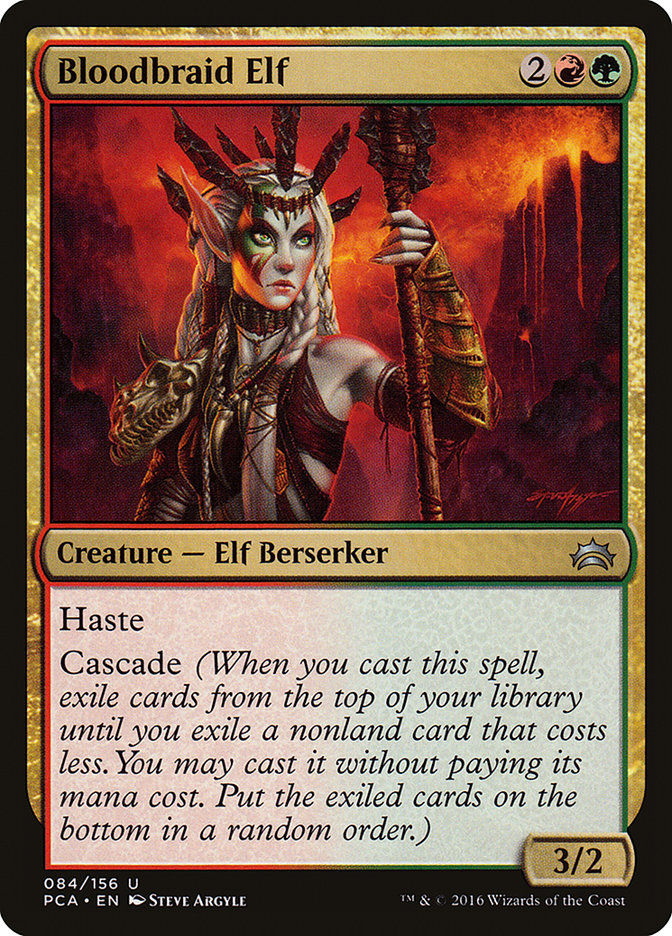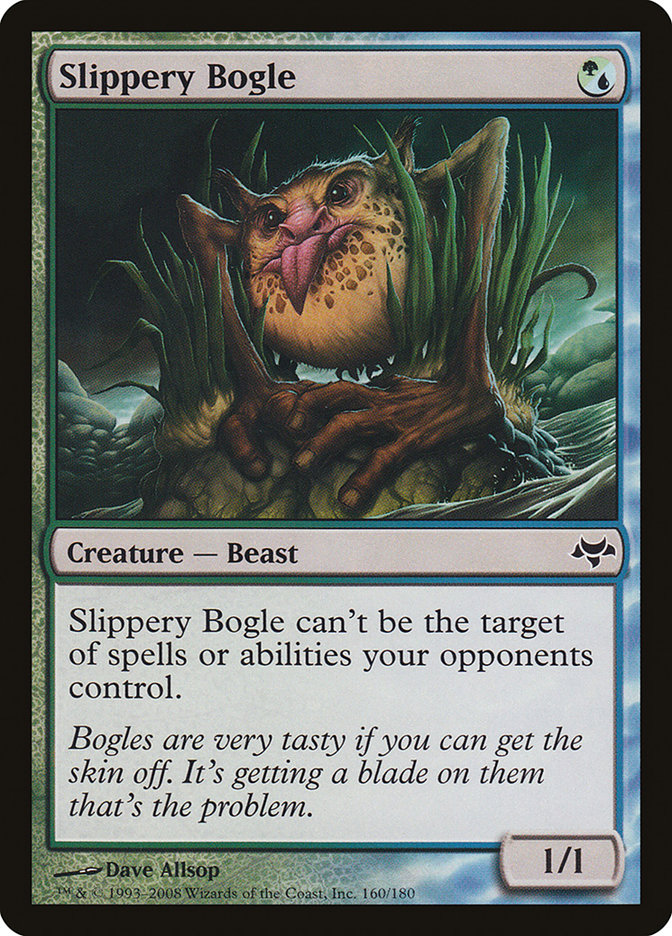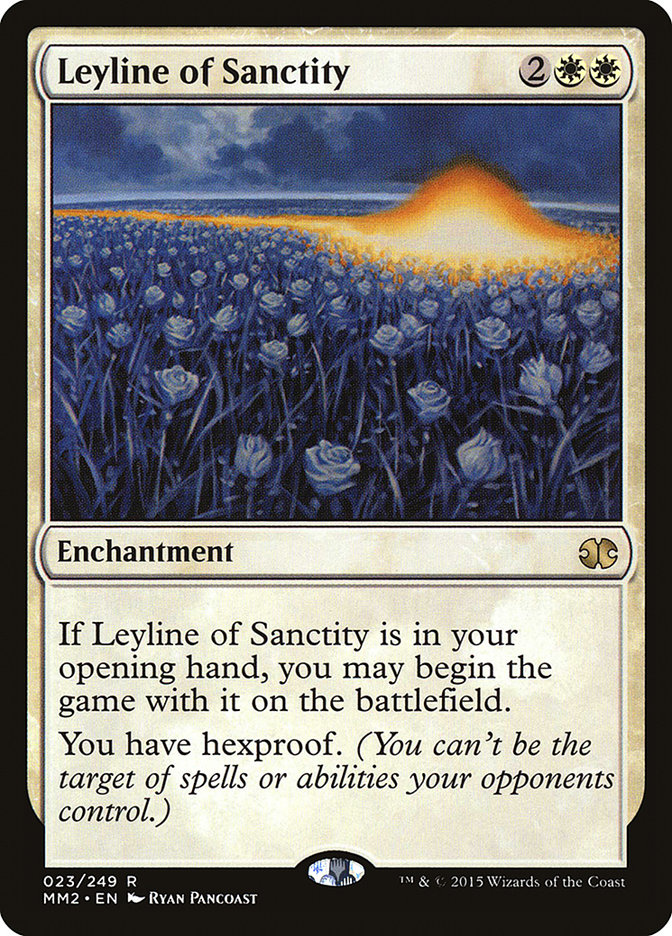What a weekend!
In Legacy, we saw some of the Grixiest, Delviest players come out to play with Bob Huang’s exact maindeck and steamroll the competition. To be sure, a few of the Grixis Delver lists diverged from the stock maindeck, but for the most part we saw the deck we expected to win do a heck of a lot of winning. This is no accident. The deck is absolutely stellar, and there are not a whole lot of reasons to play many other archetypes right now.
It bears repeating for upcoming Legacy Opens, Team Constructed Opens, Classics and Grand Prix events: if you don’t know why you aren’t playing Grixis Delver, then why aren’t you playing Grixis Delver? Yes, it sounds a little silly to phrase it that way, but the onus is on you to come up with a compelling reason to play a different deck if you want the best odds of winning the tournament.
This is not to say that the format is so beyond broken that you’re making a huge mistake by not registering Delvers and Deathrites, but barring external considerations like mastery of a different archetype or a confident and precise metagame read, your best default option is clear.
This isn’t necessarily a bad thing, as having a strong backup plan often means that you can afford to spend time and energy experimenting to find potentially broken decks, confident that you can still bring a great deck to the tournament should the experiments fail. It’s not a bad place to be, although there is an extremely high bar to clear when experimenting.
On the topic of innovation and experimentation, there is one format absolutely begging for an enterprising designer to exploit the uncertainty and uproar to win this weekend’s Open. Modern is just starting to pick up its first evolutionary cycle post-unbanning of Jace, the Mind Sculptor and Bloodbraid Elf, and the linear decks are beginning their cyclical movements of playability as the hate cards tick up and down accordingly.
This past weekend, it was G/W Hexproof in the Magic Online Championship, where the best Magic player in Siberia, Dmitriy Butakov, decided to take a calculated risk that paid off handsomely with a trophy. I have to say, it takes true courage to fly from the corner of Russia, Kazakhstan, and Mongolia all the way to the other side of the world in order to pick up Slippery Bogle against some of the best players in the game, but the endless steppe can make a man do some crazy-seeming things.
Besides G/W Hexproof, there are a number of other linear strategies that will ebb and flow with the answers in Jund, U/W, Grixis, and Jeskai sideboards. Burn, Scapeshift, Storm, Dredge, Tron, Affinity, Amulet, Living End, Taking Turns, Lantern, and a host of others will all have their days in the sun, depending on the numbers of Spreading Seas, Field of Ruin, Collective Brutality, Fulminator Mage, Ancient Grudge, Kitchen Finks, Engineered Explosives, Nihil Spellbomb, Stony Silence, Rest in Peace, and…well, you get the picture.
Presently, it appears that big mana decks (specifically Tron) are rather poorly positioned, with large quantities of low-opportunity-cost mana disruption in all the midrange decks. Field of Ruin, in particular, has had an incredible impact on Modern, one only overshadowed by the unbannings of Jace and Bloodbraid Elf. Add to that the fact that all the Jund decks had lots of Fulminator Mages in their sideboards, and you have a compelling reason not to try Tron for at least a month or two.
G/W Hexproof was a great choice with maindeck Leyline of Sanctity for a field where the Jund decks all relied on Liliana of the Veil to protect them from the narrow linear archetype, and we can expect Engineered Explosives as well as narrower cards like Settle the Wreckage or Barter in Blood to pick up in popularity as a result. More Maelstrom Pulses should become standard, as they can actually bust up a Leyline and let Liliana do her dirty business besides their general utility against Jace, delve threats, Lingering Souls, Blood Moon, and a host of other annoying permanents.
In case it wasn’t obvious, I wouldn’t recommend ogling the Bogles this weekend. Burn is a better linear choice, or Amulet Titan if you want a fun and complex option. Dredge is still fairly weak right now, as the three maindeck Scavenging Oozes and handful of good sideboard cards in all Jund decks should scare off Stinkweed Imp aficionados. Affinity is, as always, a powerful option, but heavy doses of Kolaghan’s Commands, Fatal Pushes, and Lightning Bolts make me awfully leery of recommending swarm aggro in this format.
But seriously, if you want to do big, exciting, powerful things in Modern, may I recommend Turn 2 Jace, the Mind Sculptor?
Creatures (12)
Planeswalkers (2)
Lands (28)
Spells (18)

Ian Bosley’s deck is stellar if the predominant land disruption comes in the form of Field of Ruin and Fulminator Mage rather than Blood Moon, as it’s well-positioned to outmuscle the Grixis and U/W Control decks and has nut-draw and long-game capabilities to make Jund weep. Hornet Queen is, if you’ll pardon the pun, the bee’s knees.
And yes, with two Amulets of Vigor, you too can have your very own Brainstorm machine on the second turn. As a proactive linear deck with plenty of resilience to the common hate for similar big-mana decks, this is the sleeper pick for first busted deck of the new Modern.
“But what’s going on?” the more skeptical readers might ask. “What happened to midrange hell that you predicted in that over-the-top article right on the heels of the unbans?” Relax. Bloodbraid Elf Jund is easier to perfect than Jace midrange, and the format needs two halves to truly create a vise to squeeze out diversity. What’s going on with Jace midrange, and why hasn’t Grixis been crushing everything?
Quite simply, people got so excited about Jace that they forgot the lessons that Grixis Death’s Shadow taught them. Modern isn’t a place where you can have seven or more four-casting-cost spells in your deck and expect to tango with the busted linears and Bloodbraid beatdowns that comprise the nonblue segment of the format.
Jace as a top-end means that it’s time to cut way down on Cryptic Command and embrace your ones and twos. Discard, two-mana countermagic, Snapcaster Mages, and, yes, delve threats are the name of the game. Now, clearly, it’s frustrating to lose Tasigurs and Gurmag Anglers to opposing Jace Unsummons, but those cards are necessary evils in order to properly pressure the unfair decks after an initial barrage of disruption. Incidentally, they also protect Jace by blocking Bloodbraid Elf quite well, and stand tall against Fatal Push and Lightning Bolt alike.
It’s time to talk about how to make our Jace decks lean, mean, fighting machines.
Let’s start with U/B Midrange:
Creatures (8)
Planeswalkers (7)
Lands (23)
Spells (22)

The idea here is that Jund is surprisingly soft to the delve threats, and heavy discard backed up with a Gurmag Angler can beat many of the Jace decks. If there’s one lesson we’ve learned from Grixis Death’s Shadow in previous Modern, it’s that it’s important to close the door on the opponent quickly after an initial barrage of disruption. The longer you delay with ponderous Kolaghan’s Command loops, the more you open yourself up to getting topdecked right out of a game.
It remains to be seen whether the right configuration for the new age of disruptive aggro involves Death’s Shadow, Jace and no Shadows, or Jace, no Shadows, and no red. It’s important to recognize, however, that your Jace decks are surprisingly weak to proactive decks when you slow it down and fail to shut the door swiftly when you do fend off the opponent. More discard, fewer Cryptic Commands.
Let’s look at a Grixis version of the deck that uses these principles to turn the corner quickly.
Creatures (8)
Planeswalkers (6)
Lands (23)
Spells (23)

Search for Azcanta; Jace, Vryn’s Prodigy; Liliana, the Last Hope; and Spreading Seas have been jettisoned as too slow and/or grindy, but it’s quite possible that some mix of those cards merits inclusion. We see light countermagic to help hold the door shut while the delve threats close out a game, but those counterspells are two mana rather than the ponderous four mana for Cryptic Command.
It’s much more reasonable to use Snapcaster Mage on a Logic Knot than on a Cryptic Command, and oftentimes you don’t need to dunk on your opponent with the more expensive card. A simple counterspell is all you need when you’re clocking them with a Gurmag Angler or digging hard with a Jace.
There is one powerful pseudo-delve threat, though, that has eluded discussion and that may make Gurmag Angler look silly in comparison. Bedlam Reveler, Faithless Looting, Thought Scour, and a healthy mix of instants and sorceries could be the Grixis mix to beat all others.
Creatures (10)
Planeswalkers (3)
Lands (18)
Spells (27)

The issue with Bedlam Reveler is that it competes with cards like Jace, Snapcaster Mage, and Logic Knot, but the power of the card to keep gas flowing, especially with its incredible synergy with Faithless Looting, is nothing to laugh at. Heavy discard followed by a Bedlam Reveler is an easy way to notch a few wins.
One question with this list is whether Lingering Souls and Collective Brutality in the maindeck are worthwhile inclusions. It might not even be necessary to have a white mana source, but Lingering Souls is a stellar way to protect Jace and a great card to discard with Brutality or Faithless Looting to power out a Reveler earlier. It might be possible, or even desirable, to have only two Jaces, one Snapcaster Mage, no Dreadbore, and three Lingering Souls. With so much digging power, two Jaces feels an awful lot like three.
Breaking blue midrange in Modern isn’t going to be easy, but the player who finds the right balance of aggression, staying power, and disruption (specifically, the right type of disruption for each week!) will be handsomely rewarded for their effort. To recap, you have a number of options to go with your smattering of Jaces:
- Death’s Shadow, Gurmag Angler, Stubborn Denial (“The Classic,” can go with or without Jace)
- Gurmag Angler, Field of Ruin, Liliana of the Veil (“No-Shadow No-Red,” loses Stubborn Denial)
- Gurmag Angler, Kolaghan’s Command, Lightning Bolt (“No-Shadow with Red”)
- Bedlam Reveler, Young Pyromancer, Faithless Looting (“Jace in Hell,” anti-synergistic with countermagic and Jace itself, but strong card selection)
- Lingering Souls, Liliana of the Veil, Death’s Shadow (“Esper Shadow,” which was the most ponderous Death’s Shadow deck pre-unban)
- Lingering Souls, Liliana of the Veil, Gurmag Angler (“Esper No-Shadow” likely a Soorani favorite, though he might cut Gurmag Angler to play more expensive spells)
The common thread here is heavy discard to punch a hole to shove a Zombie Fish, a Devil Horror, an Avatar, or a planeswalker through. The choice of whether to play Death’s Shadow and Stubborn Denial is the first dividing line, the choice of whether to play Red or Lingering Souls (or both, in the case of Bedlam Reveler) is another, and the choice of whether to try to include Field of Ruin is intertwined with the previous two.
The spectrum of U/B/X Thoughtseize / Jace decks is wide enough to include a format-dominating deck, and the task ahead is to be the first person to find it.





